Bronze didn’t just build tools - it built empires.
Around 3300 BCE, people in Mesopotamia started making bronze by mixing copper and tin. It was a game-changer. Stronger than stone. More durable than pure copper.
By 2500 BCE, the Indus Valley had bronze tools, toys, and even plumbing systems. The Shang Dynasty in China took bronze to the next level, creating complex weapons and ceremonial items. Across the ancient world, bronze wasn’t just useful - it was powerful. It shaped governments, armies, and everyday life.
Let’s travel back and see how this metal became the backbone of the ancient world.
In this article
Part 1: The Bronze Age Timeline
The Bronze Age marked a turning point in early human history. It was the period between the Stone Age and the Iron Age. During this period, Bronze was widely used for making tools and weapons. Bronze is formed by melting copper and adding tin, which makes it harder than copper alone. This stronger metal allowed people to build better tools and protect themselves. It also enabled them to develop more advanced societies.
Let's now look at the timeline of how it all developed.
3300 BC: Mesopotamia (Sumer & Elam)
This is where the Bronze Age started. In Mesopotamia, clever people figured out how to mix copper with tin or arsenic. This way, bronze was born. It was stronger, tougher, and way more useful than plain copper.
With bronze, everything leveled up. Farmers had sharper tools. Soldiers had deadlier weapons. Cities popped up. Trade took off. Even writing began around this time. Basically, bronze helped turn small villages into mighty civilizations. A pretty big deal for a little metal, right?
3100-3000 BC: Egypt (Early Dynastic Period)
In Egypt, copper was still the main player. But bronze was starting to show up, mostly in royal workshops and among the elites. At first, it was rare and precious, like an early luxury item.
Over time, Egypt's power grew, and so did its tech. Bronze tools helped carve temples and build pyramids. Soldiers used bronze-tipped spears. By the Middle Kingdom, bronze was everywhere. It didn't just shine; it helped shape the rise of an empire we still talk about today.
3000-2500 BC: Iran & Anatolia
In what is now Iran and Turkey, bronze wasn't imported; it was invented locally. They were smart with technology and found clever ways to use bronze early on.
They crafted tools, weapons, and beautiful jewelry. It wasn't just for survival; it was for style too. These early metallurgists also became major players in trade. Everyone wanted bronze, and they knew how to make it. These places were like the high-tech centers of their time. They quietly played a big role in shaping history. Even though they weren't always in the spotlight, their impact was important.
2600-1900 BC: Indus Valley Civilization
During this period, the Indus Valley was growing rapidly. Cities like Mohenjo-Daro and Harappa had paved streets and drainage systems. And yep - they were using bronze. Not for conquest, but for craft.
They made bronze tools, mirrors, needles, and even toys. It was practical, not flashy. They weren't big on war, but they were masters of planning and order. Bronze helped them thrive. Their cities were clean, advanced, and peaceful. Honestly, they were kind of living the dream for the Bronze Age.
2500:1200 BC: Levant & Canaan (Syria, Palestine, Jordan)
This region was full of life and movement. The Levant was like a meeting point for the ancient world. Different cultures met there, shared ideas, and bronze played a big part in it all.
City-states rose and fell. Traders moved goods, including bronze tools and weapons. Farmers used bronze plows, and warriors had bronze swords. Through centuries of change, bronze stayed essential. It kept everything running: farming, building, battling. This wasn't just about shiny metal - it was about power, survival, and progress.
2200-1600 BC: Minoan Crete (Aegean)
The Minoans lived on Crete (modern-day Greece), surrounded by sea and beauty. They weren't into fighting; they were all about art, trade, and color. Their palaces were full of life, with murals and bronze tools alike.
For the Minoans, bronze wasn't about power- it was about possibility. They used it to craft tools and decorate their homes. They weren't warriors; they were builders, artists, and traders. Their peaceful island life was all about thriving, not dominating. Bronze was just the right tool to help them do that in style.
2300-1600 BC: Central Europe (Unetice Culture)
Central Europe didn't have big temples or writing yet, but they had bronze, and they used it well. Beautiful axes, jewelry, and tools came from this quiet corner of the world.
Leaders were buried with bronze treasures. Not just shiny stuff, but symbols of power. These early Europeans told their stories without words, through metal. Their craftsmanship wasn't loud, but it made an impression. Bronze gave their culture a voice long before they ever wrote it down
2000 BC: Britain & Ireland (Beaker Culture)
Bronze finally made its way to the British Isles. The Beaker people brought it along with their pottery and customs. Out went stone tools. In came bronze axes, knives, and jewelry.
This changed everything. Farming got easier. Hunting was more efficient. Bronze tools made daily life better. People could build more, trade more, and travel farther. Small communities started to grow, connect, and thrive. A new chapter opened for Britain and Ireland - one hammered, cast, and shaped in bronze.
1900-1500 BC: China (Erlitou Culture)
In ancient China, the Erlitou culture started something big. They were the first to really embrace bronze. Not just for tools, but for rituals too. They made beautiful, symbolic bronze items.
Bronze was sacred here. It showed power, connected to ancestors, and had spiritual meaning. These people didn't just use bronze; they respected it. Their skills paved the way for future dynasties. Erlitou bronze wasn't loud, but it was spiritual. It set the stage for what Chinese civilization would soon become.
1600-1046 BC: China (Shang Dynasty)
The Shang Dynasty turned bronze into pure magic. They built massive foundries and made bronze vessels so detailed, they still amaze archaeologists today. This was bronze at its best.
They used it for war, rituals, and royal ceremonies. Weapons, chariots, bells—all bronze, all powerful. It wasn't just technology. It was identity, religion, and authority. If you had bronze, you had status. And the Shang had a lot of it. They ruled through metal and myth.
1650-1100 BC: Mycenaean Greece
You've heard of Troy, right? This is that era. The Mycenaeans lived in big fortresses, wars, and had legends. And bronze? It fueled it all. Armor, swords, helmets. These guys were the bronze action movie stars.
They didn't just fight - they built culture. Beautiful artifacts, tombs, and palaces. Homer's tales of heroes like Achilles? Inspired by this time. Their bronze wasn't just metal; it was myth. The kind of craftsmanship that carved itself into memory and echoes stories for centuries.
1500-1200 BC: Western & Northern Europe
Bronze took its time reaching Europe's northern edges, but once it did, life changed fast. People made everything from swords to pins with it. Even farming saw a big upgrade.
These weren't huge kingdoms, but their tools were clever. Bronze items ended up in lakes, graves, and bogs. Some were for daily use. Others were probably offerings. They didn't write things down, but their metalwork speaks loudly. Bronze was part of life, death, and ritual.
1200-1000 BC: Bronze Age Collapse
Then, suddenly, everything unraveled. Cities burned. Empires fell. Trade networks vanished. It was a full-on collapse. The Mycenaeans, Hittites, and others disappeared almost overnight.
Why did it happen? No one knows for sure. Some say war. Others blame drought or earthquakes. Maybe it was all of it. Whatever the reason, the Bronze Age came crashing down. And from the chaos, something new emerged. Iron took the stage, and history moved into a whole new chapter called the Iron Age.
1000 BC: Korea
Bronze finally arrived in Korea. Not a flood, just a spark. But a spark was enough. It came in from China, slowly changing how people made tools and honored their dead.
Communities picked it up fast. They shaped it into symbols, weapons, and signs of status. You can still see it in burial sites. They're carefully crafted and purposefully placed. It marked a beginning, not an ending. Bronze was more than metal here - it was the first page of a new story.
Part 2: How to Make the Bronze Age Timeline using EdrawMind?
The Bronze Age may seem hard to understand at first, but making a timeline for it is actually very easy!
With EdrawMind, you can create a clear and attractive Bronze Age timeline using simple tools and smart features.Here's how you can make a Bronze Age timeline with EdrawMind:
Step 1: Sign in & Start a New File
- Open EdrawMind and log in with your Wondershare account or your social media.
- You can also use EdrawMind online directly in your web browser.
- On the home screen, click the New Mindmap button to start a new project.
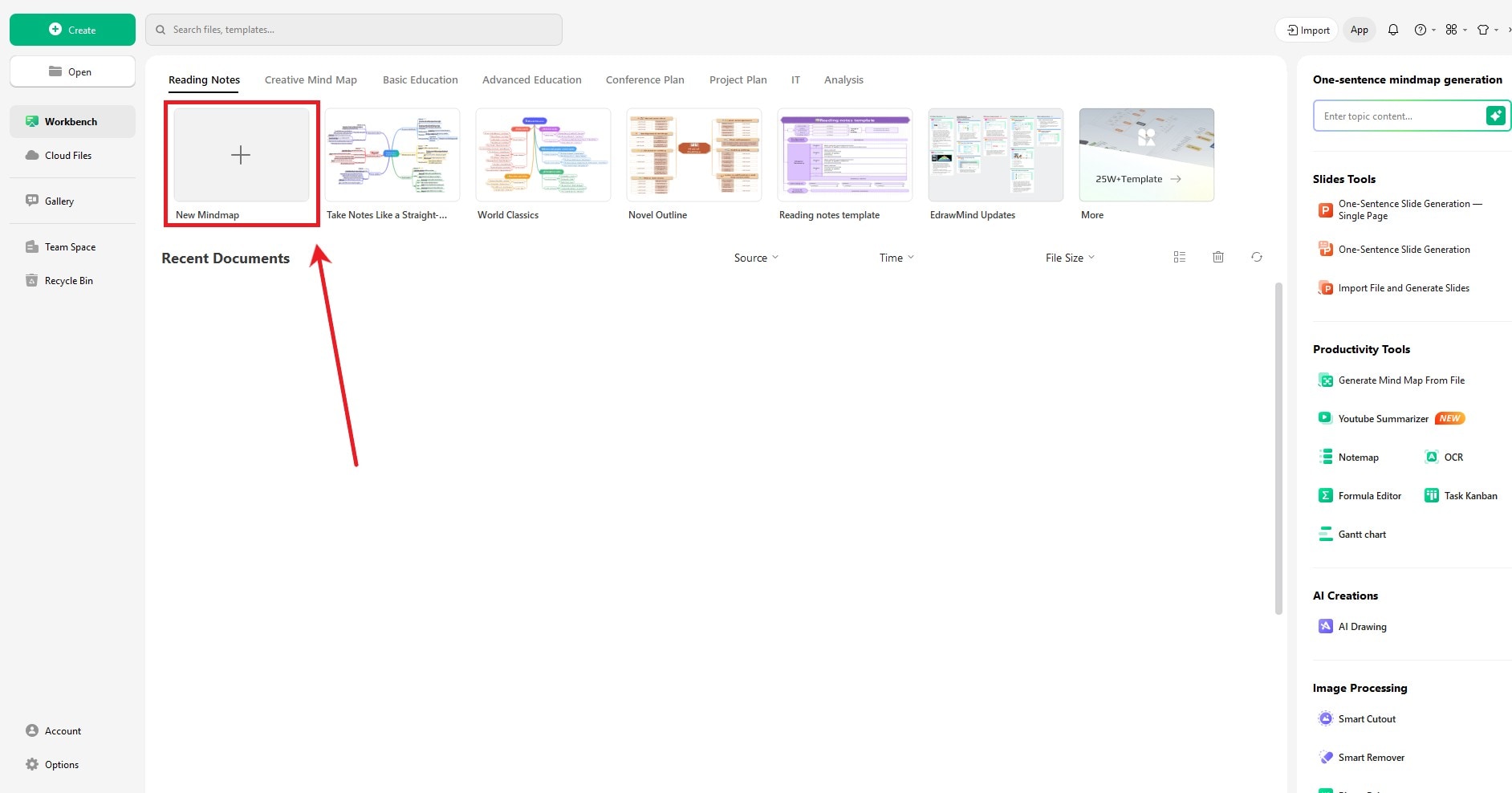
Step 2: Change the Layout
- Click on the Main Idea in your mind map.
- Find the Layout button in the floating menu that appears.
- Choose Timeline (down) from the list to change your layout to a timeline style.
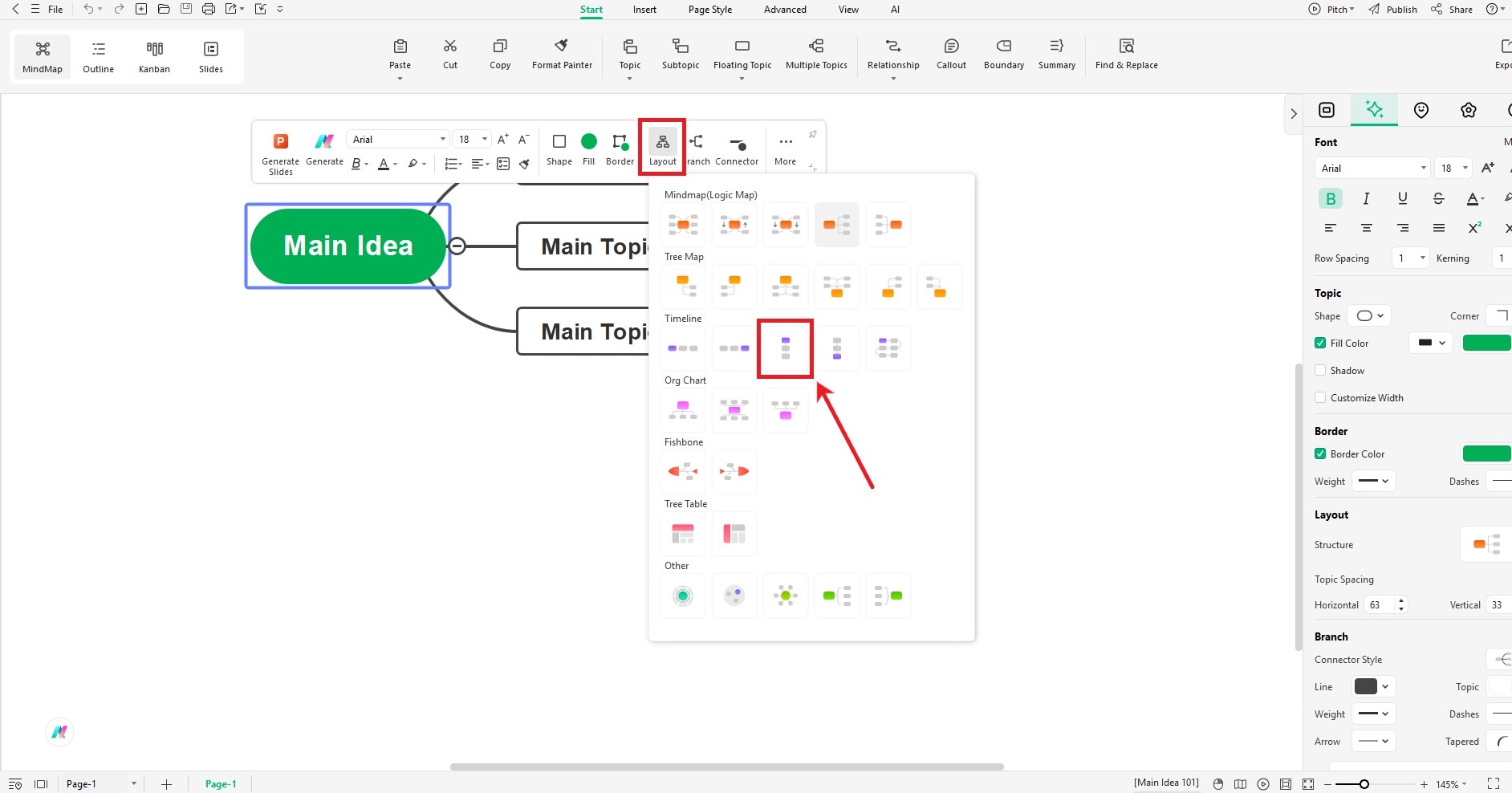
Step 3: Add Topics to the Timeline
- Click on the Main Idea, then go to the top menu and click Topic to add a new event.
- Repeat and add more Topics for each event.
- To add smaller details under a main event, click on a Main Topic, then choose Subtopic from the top menu.
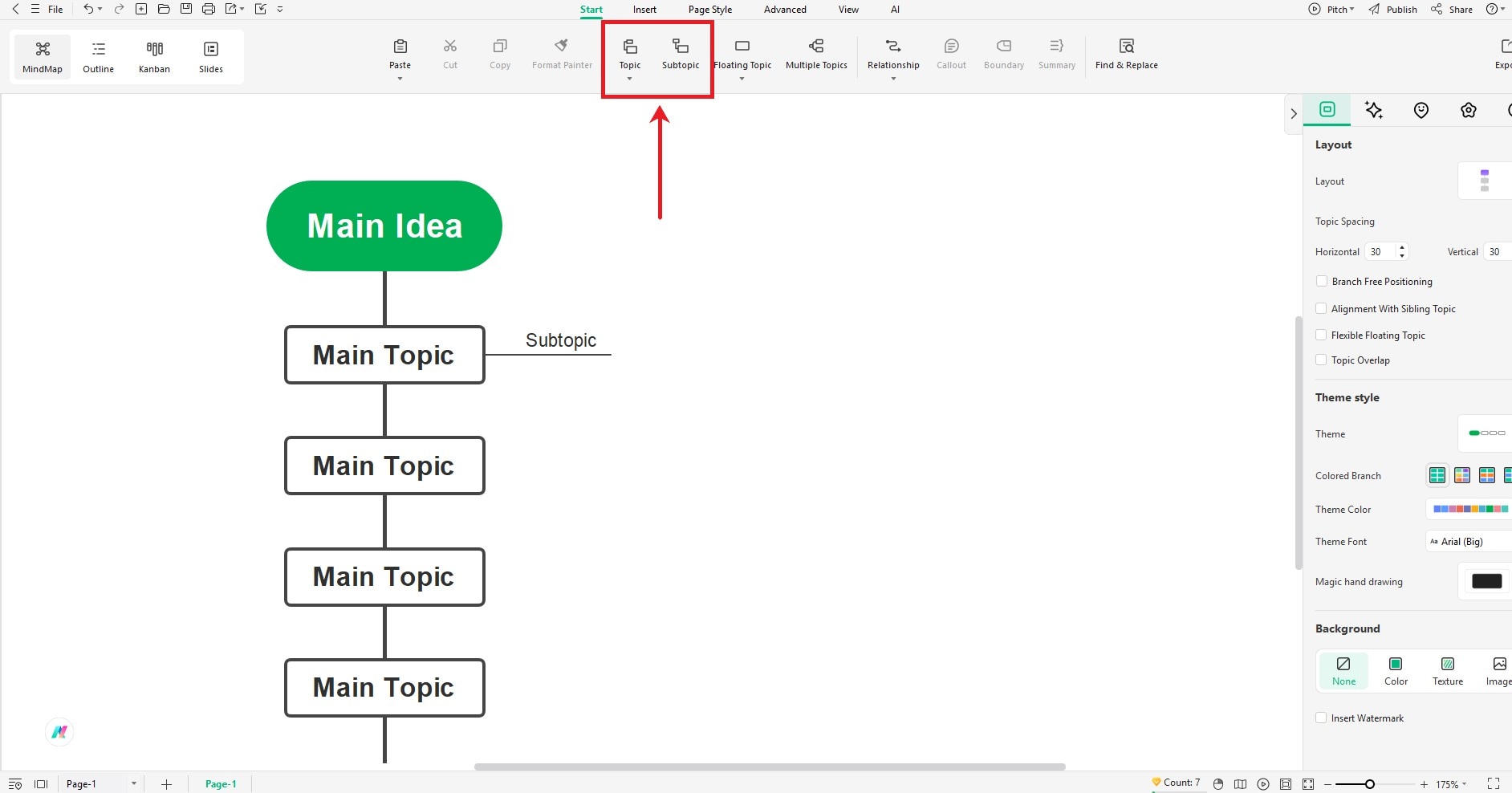
Step 4: Customize Your Timeline
- Select a topic and use the floating menu bar to customize its color, style, shape, style, and branch settings.
- To add text, click any topic and start typing to enter new content.
- Use the right toolbar and the floating menu to customize font settings.
- Pro tip: You can also select multiple topics or even the entire timeline and customize it at once.
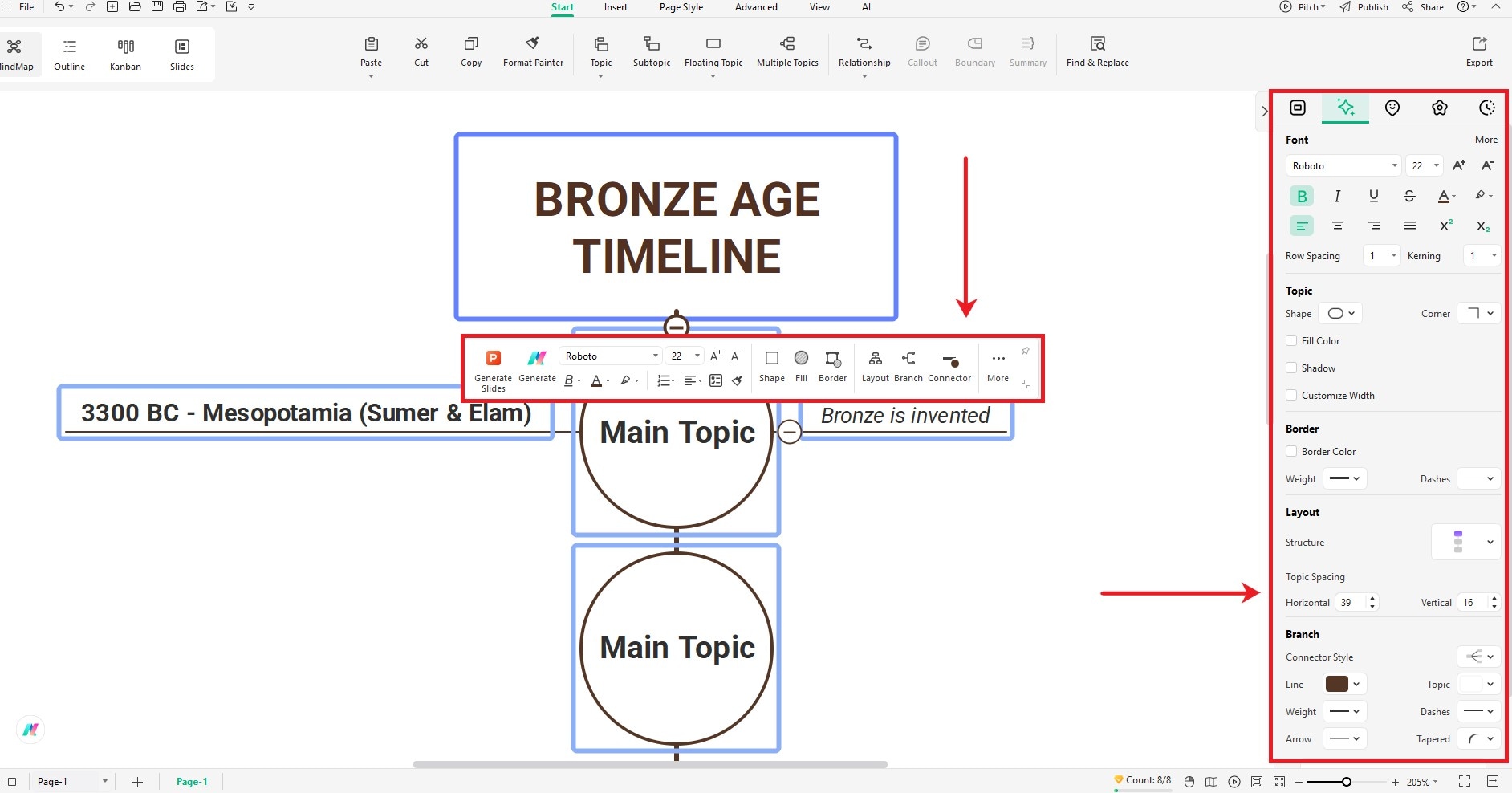
Step 5: Add Photos
- Copy and paste a photo into the EdrawMind workspace.
- Drag and drop the picture into a topic.
- Click on it and use the floating menu or the right toolbar to change its settings.
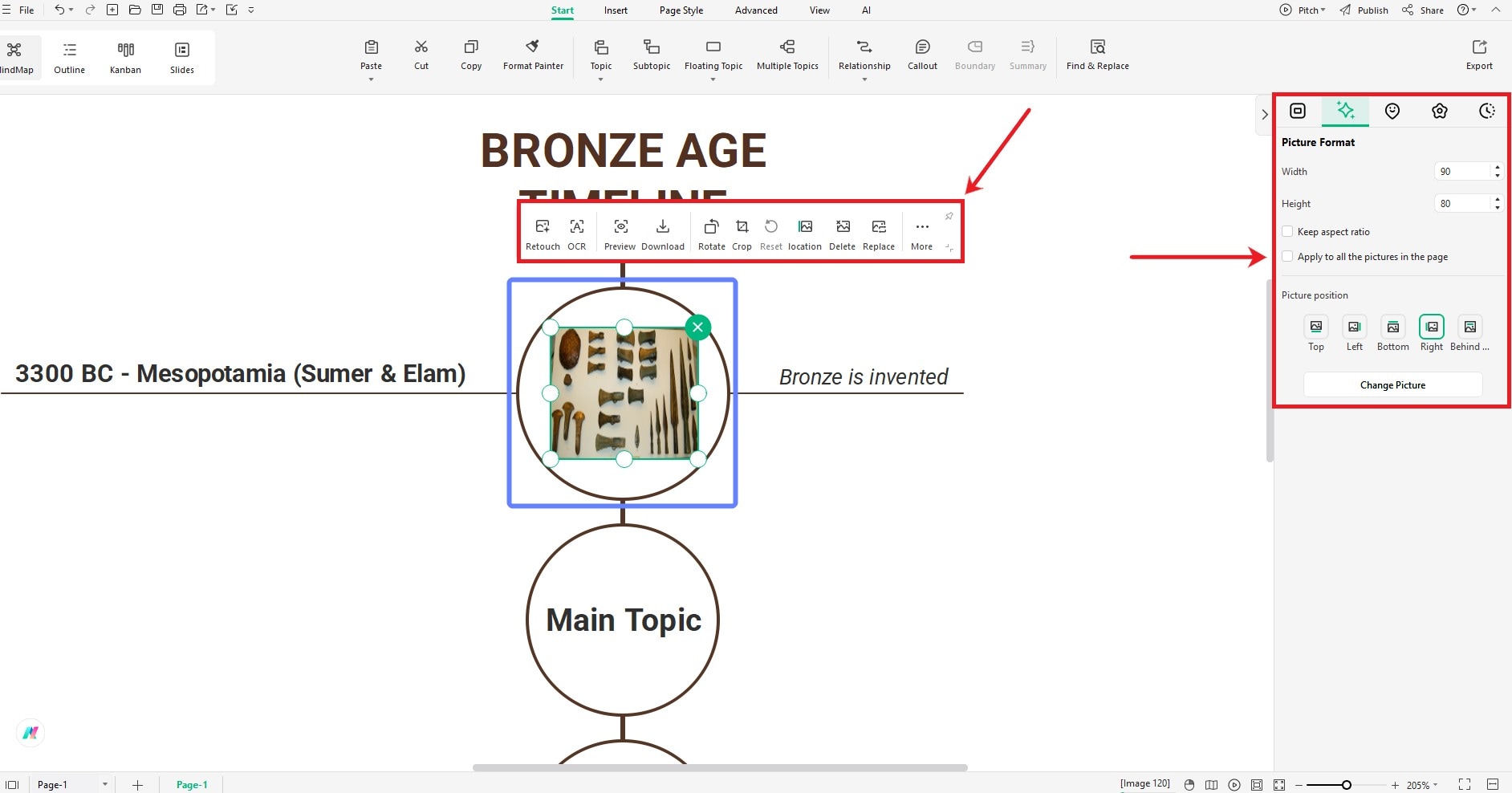
Step 6: Save & Export
- Click the File button on the top left.
- Save from the drop-down menu to download the file to your device.
- Or click Export to export your work in PNG, JPG, PDF, Word, and many more.
Summing Up
The Bronze Age shows how one discovery can shape the world. Bronze gave people the tools to grow cities, defend land, and explore new ideas. It helped create order and beauty across early civilizations. Though it ended, its impact lasted.
If you want to explore more timelines like this or create your own visual notes, check out EdrawMind. It's an easy way to map history, organize thoughts, and turn big ideas into clear, visual stories.






